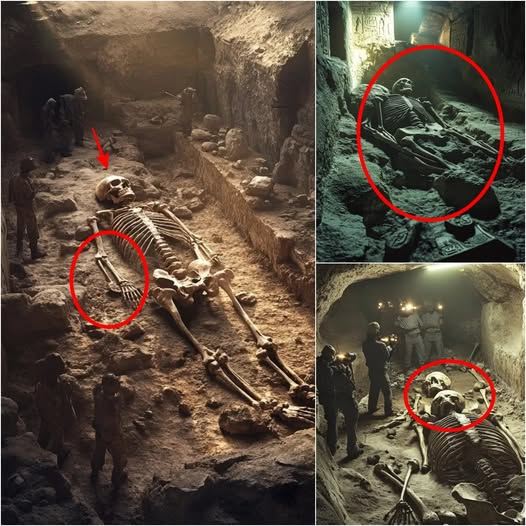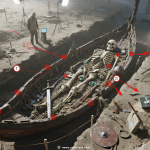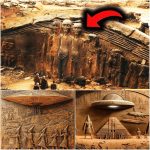Shocking Discovery Near the Pyramids: Colossal Skeletons Unearthed

Egypt’s golden sands have long held secrets, but a recent discovery near the Giza Plateau has stunned the world. A team of archaeologists working close to the pyramids has reportedly uncovered colossal human-like skeletons, each towering over 3.5 meters (11 feet) in height. Buried within a tomb dating back 4,500 years, these skeletal remains have been carbon-dated to over 10,000 years old—making them far older than the pyramids themselves. If verified, this discovery could radically change our understanding of history, human evolution, and the legends of ancient giants.
A Discovery That Challenges History

The tomb, hidden beneath the sands near Giza, contained multiple giant skeletons along with strange artifacts and symbols never before seen in Egyptian archaeology. The sheer size of the remains has sparked heated debate among scientists and historians alike. While skeptics argue that anomalies in fossilization or measurement may be at play, others believe this could be evidence of a forgotten civilization predating dynastic Egypt.
If the carbon dating is accurate, the skeletons predate not only the pyramids but also much of recorded history, suggesting a chapter of humanity that has long been buried—both literally and figuratively.
Giants in Myth and Legend
The discovery has reignited interest in global myths of giants. From the Nephilim of biblical texts to the giant kings of Mesopotamian lore, stories of enormous beings have been told across cultures for millennia. In Egypt itself, hieroglyphs and legends occasionally allude to towering figures, though these have traditionally been interpreted as symbolic rather than literal.
Could the Giza skeletons be the inspiration for such tales? Or do they represent a lost branch of humanity erased from mainstream history?
Strange Artifacts and Symbols
Perhaps even more intriguing than the skeletons themselves are the artifacts discovered alongside them. Described as tools, ornaments, and inscribed objects with markings unknown to Egyptian culture, they hint at the existence of a people with advanced knowledge and unique traditions. The symbols do not match hieroglyphs or any known script, leaving researchers puzzled about their origins.
This raises further questions: Were these giants part of an indigenous culture predating Egypt, or were they visitors whose legacy was absorbed into myth?
DNA Testing and the Road Ahead

To move beyond speculation, scientists have begun DNA testing and further analysis of the remains. If genetic sequencing reveals unique traits—or connections to modern humans—it could provide answers to questions about whether these beings were part of our evolutionary line or a separate, now-extinct species.
Until those results are revealed, the discovery stands as one of archaeology’s most mysterious and controversial finds.
Conclusion
The colossal skeletons unearthed near the Pyramids of Giza challenge everything we thought we knew about Egypt’s past and humanity’s origins. Whether they prove to be evidence of ancient giants, a lost civilization, or a misinterpreted anomaly, their presence beneath the sands is undeniably extraordinary. For now, the world waits as science seeks to uncover the truth.
One thing is certain: Egypt has not yet given up all its secrets, and the next revelation may completely rewrite history.











